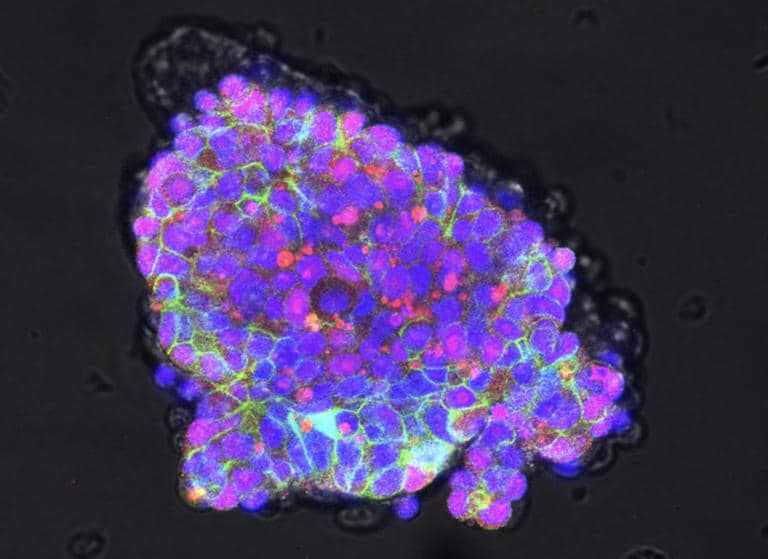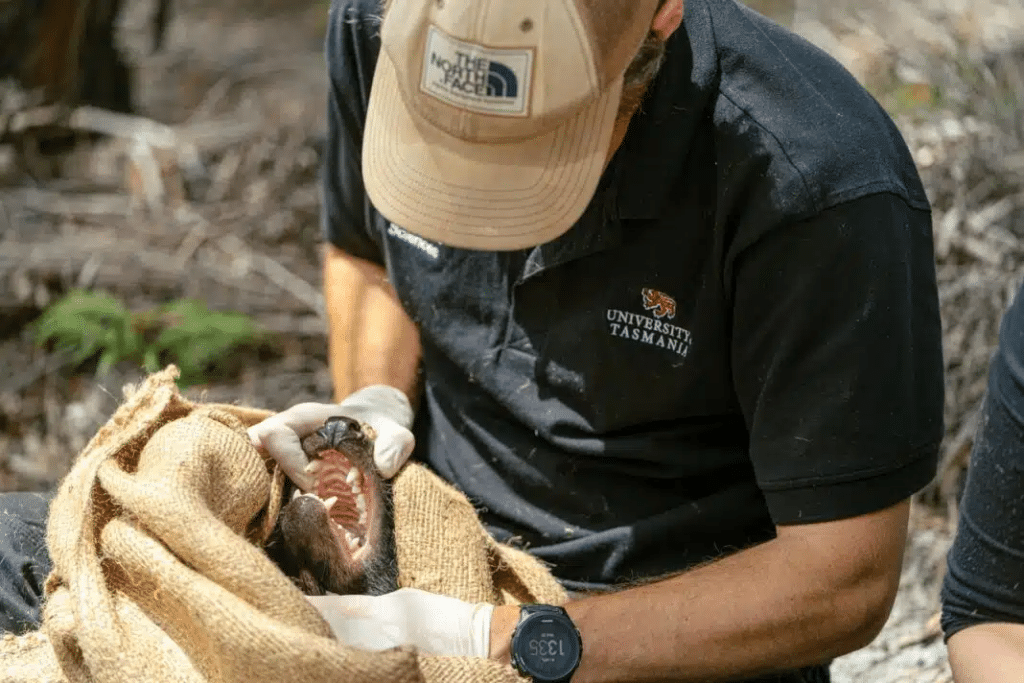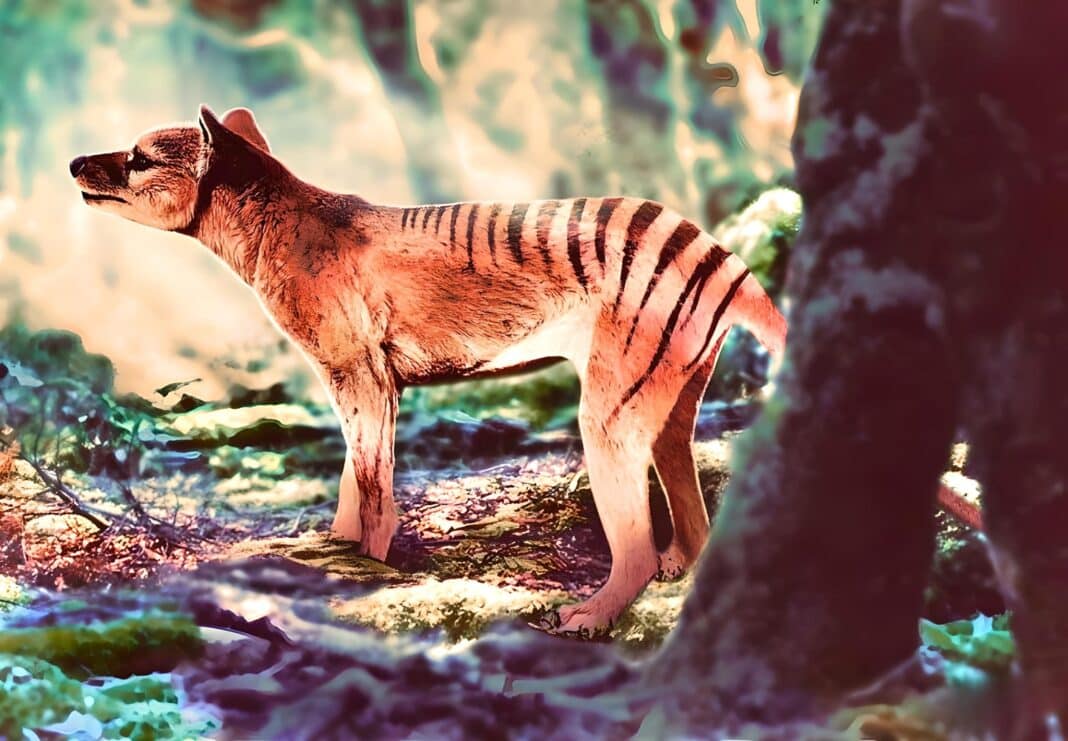The Tasmanian Tiger is one step closer to being rewilded after researchers made a major discovery on the genome sequence of the extinct Thylacine.
“It’s a big deal. The genome we have for it is even better than we have for most living animals, which is phenomenal,” according to Melbourne University scientist Andrew Pask, who is busy working with Sustainable Timber Tasmania, Traditional Owners, Government, Landowners and Dallas-based Colossal Biosciences who is looking to rebirth a Thylacine within the next three years – and return to the wild inside a decade.
Known for being slim and striped, the Thylacine was once native to Australia-wide (in addition to just Tasmania) and New Guinea before becoming extinct in September 1936, with the last known animal immortalised in film.
At its peak, before British colonialism, scientists report that up to 4000 ‘island tigers’ roamed Tasmania’s forests. However, the species was “severely depleted” after the Tasmanian government paid more than 2000 bounties to cull numbers between 1888 and 1909, leading global scientists to speculate why and how the wildlife tragedy occurred.
Founded by emerging technology and software entrepreneur Ben Lamm and world-renowned geneticist and serial biotech entrepreneur George Church, Colossal is the first to apply CRISPR technology for species de-extinction.
Since launching the project last year, researchers have produced a comprehensive genome using “one of the best-preserved specimens known for any extinct species,” according to Beth Shapiro, Colossal’s top scientist, who added that “the genome is a first for an extinct species, and a feat many scientists believed would never be achieved for extinct species.”
“It’s rare to have a sample that allows you to push the envelope in ancient DNA methods to such an extent,” Ms Shapiro said. “We’ve delivered a record-breaking ancient genome that will accelerate our thylacine de-extinction project.”

Why rewilding the Thylacine is a project of global significance
According to Mr Lamm, bringing the thylacine back will not only return the iconic species to the world “but has the potential to re-balance the Tasmanian and broader Australian ecosystems, which have suffered biodiversity loss and ecosystem degradation since the loss of the predator earlier this century.”
“Research shows Australia has the worst mammalian extinction rate in the world,” Mr Lamm said, and “without an apex predator, ecosystems plunge into a series of cascading trophic downgrading effects, leading to the spread of disease, an increase in wildfires and invasive species, a reduction in carbon sequestration, and a disruption to natural biogeochemical cycles.”
He said the Thylacine could play a critical role in regulating the ecosystem by hunting non-native mesopredators, which prey on native herbivores: “When the native herbivores disappear, the natural vegetation changes, transforming the landscape and creating a vicious cycle of degradation.”
It is Colossal Bioscience’s second project after it announced plans in 2021 to de-extinct the woolly mammoth and restore the keystone species to the Arctic Tundra.
The woolly mammoth restoration team now has over 35 dedicated scientists spanning various functional areas, including cell engineering, stem cell biology, embryology, computational biology, and genome engineering, as well as three laboratories focused on the mission of mammoth de-extinction.
The Tasmanian Thylacine Advisory Committee
Last year, Mr Lamm announced appointees to the Select Tasmania Thylacine Advisory Committee, which will “provide a crucial public body for the discussion, development and dissemination of plans related to the rewilding of the thylacine.”
Led by the Mayor of the Derwent Valley Council, Michele Dracoulis, the committee comprises:
- Mayor Michelle Dracoulis of the Derwent Valley Council
- Mayor Loueen Triffitt, Tasmanian Aboriginal (Pakana) Ambassador & Cultural Educator and the Mayor of the Central Highlands Council
- James Groom, principal of Groom Kennedy Lawyers and Advisors and Deputy Chancellor of the University of Tasmania
- Mia Lindgrin, Associate Dean of Research Performance for Community Consultation and Impact, University of Tasmania
- Sam Bradley, CEO of the Derwent Experience
- Todd Babiak, CEO of Brand Tasmania
- Alex Heroyas, Chief Executive Officer of Destination Southern Tasmania
- Peter Rowe, Tasmanian Aboriginal Advocate and proud Trawlwoolway man
- Greg Irons, Director of Bonorong Sanctuary
- Michael Smith, President of the Derwent Valley and Central Highlands Tourism Association
- Kennedy Kurwaisimba, Coordinator Forest Products – Planning at Sustainable Timber Tasmania
- Murray Antill, University of Tasmania School of Creative Arts & Media
According to Mayor Dracoulis, the project has extreme importance to Tasmania, “culturally, on our island, the thylacine is more than an extinct animal. It is part of our identity and lives strongly in our folklore and imagination”.
Peter Rowe, Aboriginal Advocate, Derwent Valley Council Indigenous Advisor and Lawyer, said he was looking forward to “talking to our Aboriginal groups to inform the members of this exciting project. The Thylacine has been a cultural icon of Aboriginal groups throughout Australia for thousands of years and is featured in our ancient rock art. Plus, it is my family totem.”
He said the Thylacine was an apex predator wiped out by man, and “from its loss, the environment has suffered. Our people work to maintain nature’s balance as part of our duty to care for the Earth.”
Sustainable Timber Tasmania, formerly Forestry Tasmania, is a government-owned enterprise that manages over 800,000 hectares of public production forests.

The project follows work in the Forico private plantation estate last year, where global scientists discovered that the heavily endangered Tasmanian Devil can co-exist with devil facial tumour disease (DFTD). The research team, which included members from France, the United States, and Australia, examined 159 cancer genomes from the West Pencil Pine devil population to evaluate the dynamics of tumour variations across the decade-long outbreak.






